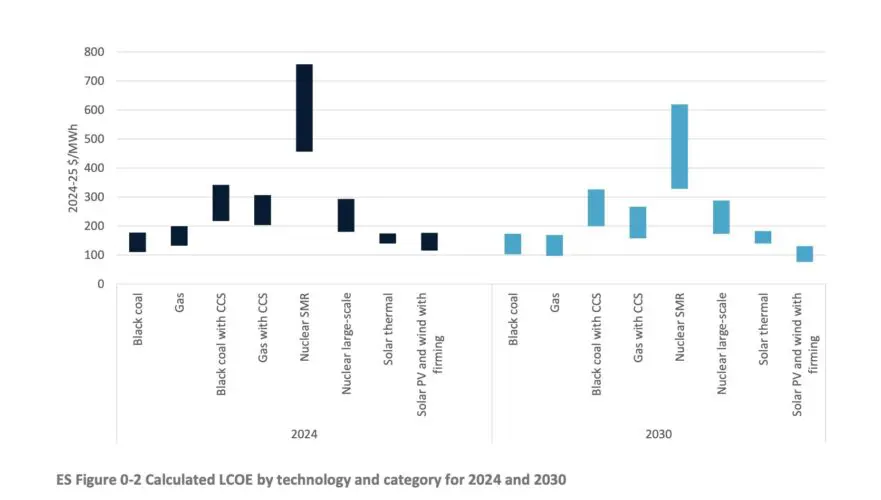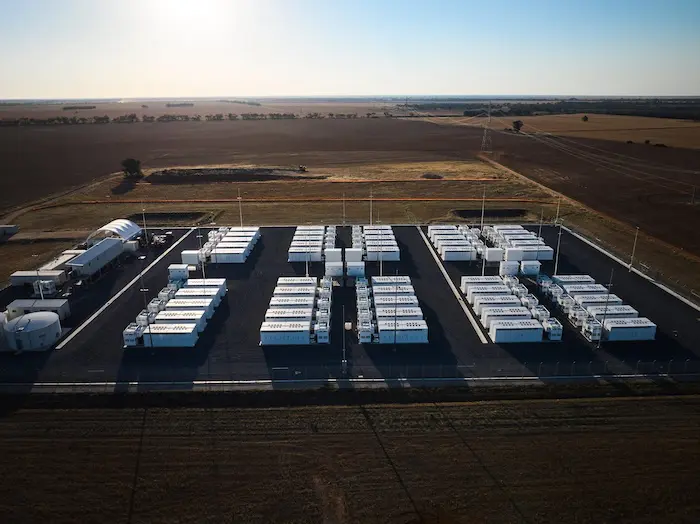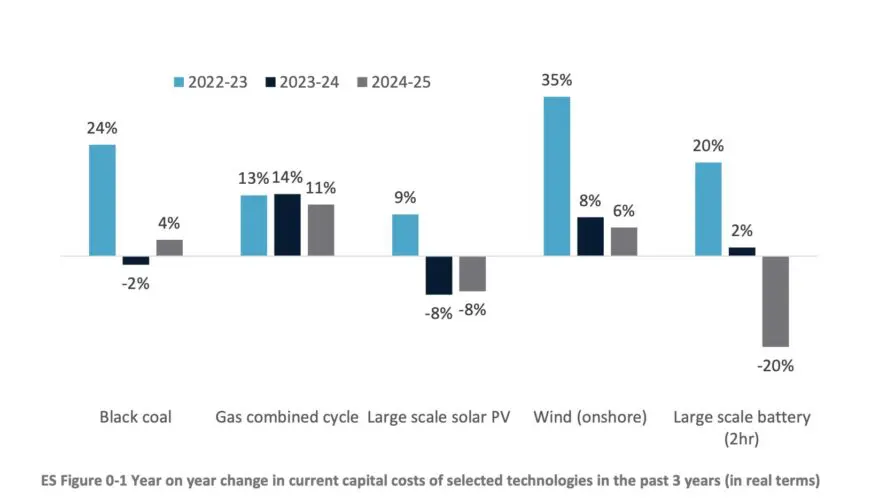The plunging cost of battery storage has ensured that integrated renewables remain the lowest new build generation option for Australia, while the western world’s first small modular reactor contract has confirmed the CSIRO’s view that nuclear is by far the most expensive.
The final version of the 2024/25 CSIRO’s GenCost report has been released on Tuesday and once again confirms – despite the extraordinary attacks from critics over the last few years – that integrated renewables is easily Australia’s best option as it looks to replace its ageing and heavily polluting coal fired generators.
This is despite inflationary pressures on civil construction works, and the additional costs of worker camps for large wind projects that have been included in its calculations for the first time, adding around 4 per cent to the costs of wind energy.
Overall wind costs have increased by around 6 per cent in the last 12 months, but capital costs for solar PV – driven by the falling cost of modules in China – has fallen by 8 per cent for the second consecutive year.
The big mover was battery storage – also driven by the plunge in the cost of battery cells in China – and its capital costs have fallen 20 per cent.
Importantly, the cost of its major competitor, gas storage, has soared, with the price of gas turbines jumping another 11 per cent following increases of 13 per cent and 14 per cent in previous years. And gas turbines are difficult to get hold of, because of a lack of supply and strong demand around the world.
The LCOE cost range for variable renewables (solar PV and wind) with integration costs is the lowest of all new-build technologies in 2030 and at a similar range with black coal in 2024,” the report says.
“The lower end of the cost range of gas generation is also competitive. Black coal and gas are high emissions technologies which, if used to deliver the majority of Australia’s power supply, are not consistent with Australia’s current climate change policies.”
 Screenshot
Screenshot
The problem with gas is significant for Australia, given the government’s and many regulators’ attachments to the technology, and in light of the growing competition from battery storage.
“It’s hard to get a gas turbine, and we looked at our projections which had gas improving, and we just don’t think that’s realistic,” CSIRO energy economist Paul Graham, who leads the team that compiles the report, told Renew Economy.
“So we we put a pause on any cost reductions in gas turbines in the next three years, until we see that global manufacturers catch up with demand or vice versa.”
Graham says the addition of the cost of worker camps is a significant one, given the shortage of accommodation in remote projects, and concerns raised by multiple councils over the issues.
“It’s less of a problem for solar projects, because you can build them closer to places that have sufficient common accommodation and workforces,” Graham says. “So this is a just an onshore wind specific issue that we had to tidy up.”
The other major change since the draft report was release in late December was the increase in the “discount rate” to 7 per cent from 6 per cent, in line with existing practise at AEMO, and the recommendations of Infrastructure Australia.
This makes all capital costs more expensive, particularly in those technologies where capital costs are high and running costs are low. “It moves all of the numbers slightly upwards,’ Graham says. “And so if anyone wants to make a comparison, all these numbers are slightly higher than they were in the consultation draft.”
The bottom line, however, is that integrated renewables are the lowest cost option for Australia, and for much of the world, as multiple reports including from Lazard, the IEA, the International Renewable Energy Agency, will attest.
And what’s interesting is the new dynamic where solar and battery costs are falling fast, whereas wind costs are static at best and rising, and the technology is facing more difficult planning and social licence issues.
“So solar and batteries are doing great, as you know,” Graham says. “That’s not a cause for complete celebration, because we still need wind in the system.
“Most electricity modeling will still say you need both. You need wind and solar. So, I won’t be completely happy until we see wind costs turnaround and post some reductions. But we are not there yet.”
We explore the nuclear cost issue in a separate article. Angry nuclear lobby backs off as landmark SMR deal confirms CSIRO’s bleak cost estimates
Giles Parkinson is founder and editor-in-chief of Renew Economy, and founder and editor of its EV-focused sister site The Driven. He is the co-host of the weekly Energy Insiders Podcast. Giles has been a journalist for more than 40 years and is a former deputy editor of the Australian Financial Review. You can find him on LinkedIn and on Twitter.


